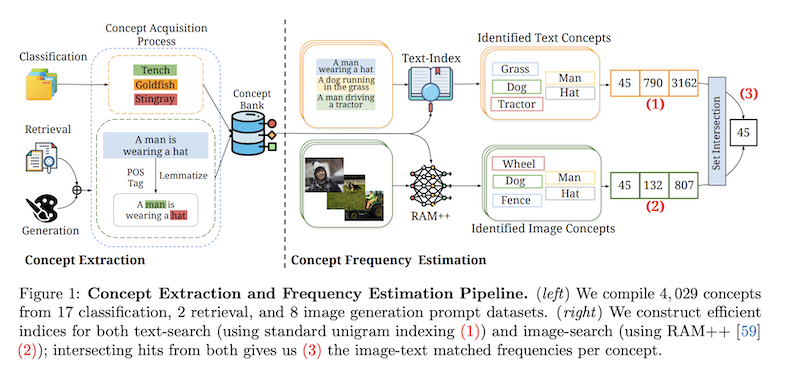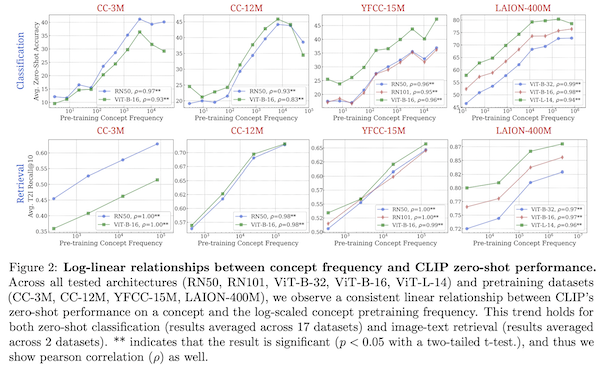No 'Zero-Shot' Without Exponential Data: Pretraining Concept Frequency Determines Multimodal Model Performance
Data
Notes from paper No "Zero-Shot" Without Exponential Data: Pretraining Concept Frequency Determines Multimodal Model Performance by Vishaal Udandarao, Ameya Prabhu, Adhiraj Ghosh, Yash Sharma, Philip H.S. Torr, Adel Bibi, Samuel Albanie and Matthias Bethge.
Overview
The authors analyse 30GB of data from multimodal datasets (CC-3M, CC-12M, YFCC-15M, LAION-400M, LAION-Aesthetics) used to train models like CLIP and Stable-Diffusion and build a pipeline to extract "concepts" (nouns like "man", "hat", "fish").

They determine a log-linear relationship between concept frequency and zero-shot performance: The model needs to see exponentially more examples in training to achieve a linear zero-shot performance increase for a concept.

They also find some interesting discoveries in these web-scraped datasets:
- Concept Distribution: Across all pre-training datasets, concepts are long-tailed: a large fraction of concepts are rare, and the rare concepts are not properly learned during multimodal pretraining.
- Concept Correlation across Pre-training Datasets: The distribution of concepts across different pretraining datasets is strongly correlated, suggesting different web crawl datasets mostly contain the same stuff and share similar problems.
- Image-Text Misalignment between Concepts in Pre-training Data: They identify a wide-scale misalignment problem between pairs where concepts can appear in one modality but not the other. In some cases, up to 36% of pairs are misaligned in publicly available datasets.
They curate a dataset called Let It Wag that identifies the least frequent concepts across the web scrapes (examples: A310 aircraft, a worm snake, and a tropical kingbird). It was found that performance across classification models and image generation tasks is considerably worse (as compared to ImageNet) on this dataset.